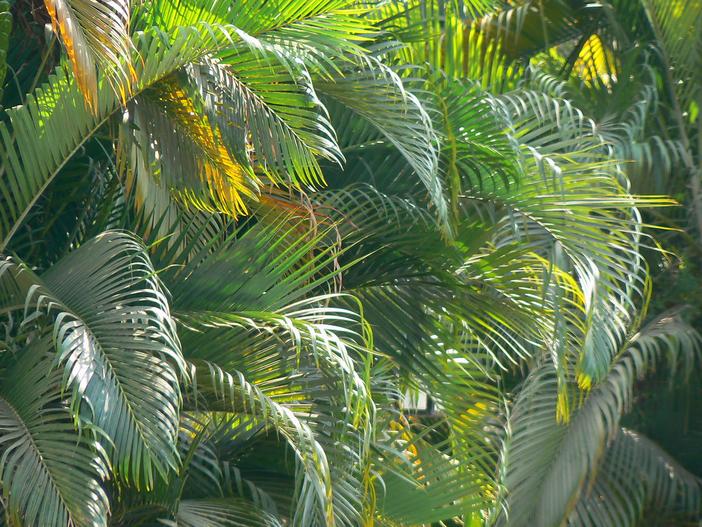Golden Cane Palm
(Dypsis lutescens)
Golden Cane Palm (Dypsis lutescens)
/
/

Dinesh Valke
CC BY-SA 2.0
Image By:
Dinesh Valke
Recorded By:
Copyright:
CC BY-SA 2.0
Copyright Notice:
Photo by: Dinesh Valke | License Type: CC BY-SA 2.0 | License URL: https://creativecommons.org/licenses/by-sa/2.0/ | Uploader: Dinesh Valke | Publisher: Flickr



















































Estimated Native Range
Summary
Dypsis lutescens, commonly known as Golden Cane Palm or Butterfly Palm, is an evergreen palm native to moist forests and coastal regions of eastern Madagascar. It typically grows 6–12 m (20–39 ft) in height and features multiple clumping stems that give the plant a lush, full appearance. The fronds are gracefully arched, 2–3 m (6 ft 7 in – 9 ft 10 in) long, and pinnate with 40-60 pairs of narrow leaflets, creating a delicate, feathery look. During the summer, it produces panicles of small, yellow flowers, adding a subtle ornamental value. The common name "Butterfly Palm" is derived from the leaves that curve upwards in multiple stems, resembling the wings of a butterfly.
Golden Cane Palm is valued for its air-purifying qualities and its ability to add a tropical feel to landscapes and indoor spaces. It is widely used as an ornamental plant in gardens in tropical and subtropical climates, and as a houseplant in cooler regions. It has received the Royal Horticultural Society’s Award of Garden Merit, indicating its excellence for garden use. This palm prefers bright, indirect light or part shade and requires medium water and well-draining soil to thrive. It is relatively easy to maintain, but gardeners should be aware of potential issues such as spider mites and mealybugs in indoor settings. Offsets can be removed for propagation once they are mature enough.CC BY-SA 4.0
Golden Cane Palm is valued for its air-purifying qualities and its ability to add a tropical feel to landscapes and indoor spaces. It is widely used as an ornamental plant in gardens in tropical and subtropical climates, and as a houseplant in cooler regions. It has received the Royal Horticultural Society’s Award of Garden Merit, indicating its excellence for garden use. This palm prefers bright, indirect light or part shade and requires medium water and well-draining soil to thrive. It is relatively easy to maintain, but gardeners should be aware of potential issues such as spider mites and mealybugs in indoor settings. Offsets can be removed for propagation once they are mature enough.CC BY-SA 4.0
Plant Description
- Plant Type: Tree, Shrub
- Height: 20-39 feet
- Width: 8-15 feet
- Growth Rate: Moderate
- Flower Color: Yellow
- Flowering Season: Summer
- Leaf Retention: Evergreen
Growth Requirements
- Sun: Full Sun, Part Shade
- Water: Medium
- Drainage: Medium
Common Uses
Low Maintenance, Potted Plant, Street Planting
Natural Habitat
Moist forests and coastal regions of eastern Madagascar
Other Names
Common Names: Yellow Butterfly Palm, Areca Palm, Cane Palm, Golden-Yellow Palm, Yellow Palm, Butterfly Palm, Guldpalm, Areca-Bambú, Palmeira-Areca
Scientific Names: , Dypsis lutescens, Chrysalidocarpus lutescens, Chrysalidocarpus glaucescens, Areca flavescens, Chrysalidocarpus baronii subsp. littoralis, Chrysalidocarpus baronii var. littoralis,
GBIF Accepted Name: Dypsis lutescens (H.Wendl.) Beentje & J.Dransf.